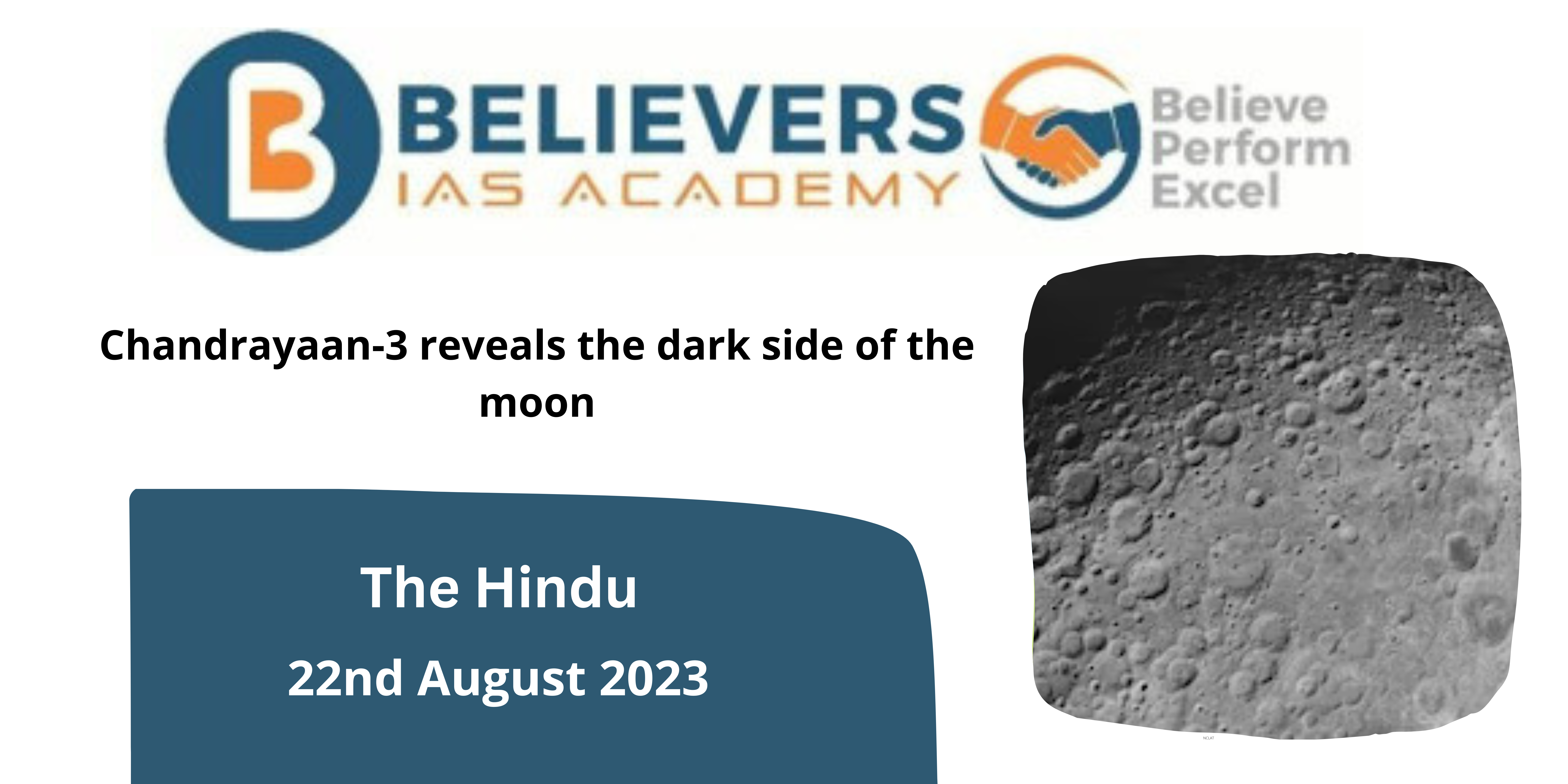Chandrayaan-3 reveals the dark side of the moon
What is the Dark Side of the Moon?
- The phrase “dark side of the moon” refers to the side of the moon that is not visible from Earth. The moon’s surface does not always appear to be dark; in fact, it receives the same amount of sunlight as the side facing Earth. This side of the moon is more appropriately referred to as its “far side.”
- The moon orbits the Earth at the same rate as it rotates on its axis because it is tidally locked to the planet. Because of this, our planet can only see one side of the moon. This side, often known as the “near side,” is the one that we can see from Earth.
What are the characteristics of the Far side of the moon?
- Synchronous Rotation: The hemisphere of the moon that is constantly facing away from Earth is the far side. The moon rotates on its axis in synchrony with its orbit around the Earth, a process known as synchronous rotation.
- Terrain and Features: The far side’s terrain is marked by its abrasiveness and is full of impact craters. Less of the flat, dark lunar maria (seas) that are present on the near side can be found there. As a result, the far side resembles other celestial bodies like Mercury and Callisto in appearance, where it is more desolate.
- South Pole-Aitken Basin: The South Pole-Aitken Basin, one of the biggest impact craters in the entire Solar System, is one of the most noticeable features on the far side.
- Misconception of the “Dark” Side: The phrase “dark side of the Moon” can be deceptive. It does not refer to the side that receives no sunlight, but rather to the side that is less familiar to us because it is always turned away from Earth.
- Day-Night Cycle: The far side experiences a typical day-night cycle, much like the near side. Approximately two weeks of daylight are followed by two weeks of darkness on each side of the moon.
What were the missions previously done by other countries in this area of the moon?
- Luna 3 Mission (1959): In 1959, the Soviet spacecraft Luna 3 became the first to take images of the moon’s far side. This was the first time this undiscovered hemisphere has been visually explored.
- First Atlas (1960): Using photos from Luna 3, the Soviet Academy of Sciences released the first atlas of the far side.
- Apollo 8 Mission (1968): The Apollo 8 mission in 1968 was the first occasion that people saw the far side. The team made an orbit around the moon and described its aspects from personal experience.
- Chang’e 4 Mission (2019): Before 2019, all soft landings took place on the near side. This changed with the Chang’e 4 Mission. With its historic landing on the far side, the Chinese Chang’e 4 spacecraft created new possibilities for research and exploration.
What is the data given by ISRO’s Chandrayaan 3 regarding the dark side?
- Chandrayaan-3’s scheduled lunar landing is being prepared for by the Indian Space Research Organization (ISRO).
- On Monday, ISRO made photographs of the lunar surface’s far side, also referred to as the moon’s dark side because it is never visible from Earth.
- The pictures were taken on August 19 using the Chandrayaan-3 lander’s Lander Hazard Detection and Avoidance Camera (LHDAC).
- By spotting potential dangers like boulders or deep pits during its descent, the LHDAC helps the lander find a secure landing location.
- The LHDAC camera was created by the Space Applications Centre (SAC) of ISRO.
- The publication of these photographs offers insightful information on a less-explored region of the moon.
What could we learn from the data sent from Russia’s failed Mission?
- On Sunday, the Russian Luna-25 mission, which was intended to explore the moon’s far side, unluckily collided with the moon.
- Luna-25 had sent pictures of the moon’s far side before the collision. This was a crucial development in the investigation of the uncharted territory.
Conclusion :
In summary, the release of far-side lunar images, the Russian Luna-25 mission, and the videos captured by Chandrayaan-3 collectively contribute to our understanding of the moon and the ongoing efforts of ISRO in space exploration.




